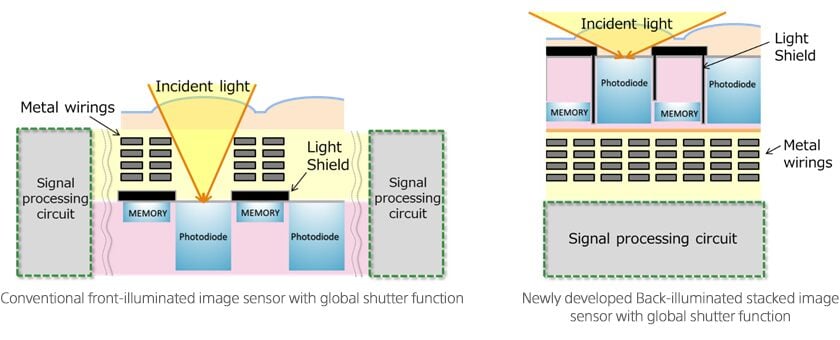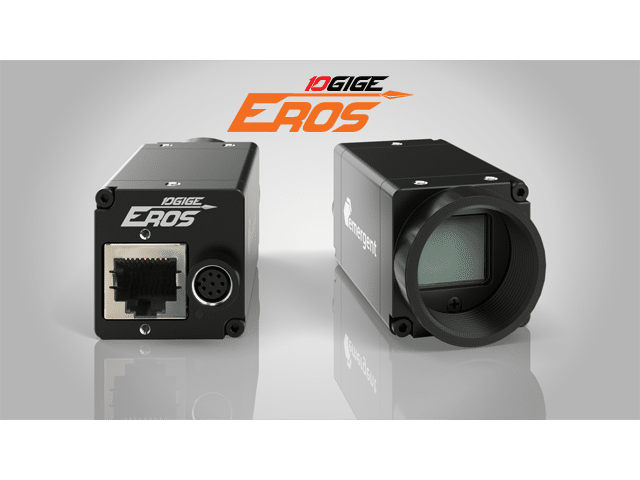New Sony Pregius S Technology: What to Expect
Sony Semiconductor announced in March 2019 it had developed Pregius S, a new stacked CMOS image sensor technology that employs Sony’s proprietary global shutter function. Pregius S features back-illuminated pixel structure that delivers distortion-free, high imaging performance and miniaturization.
Benefits of back-illuminated pixel structure
Previous generation front-illuminated CMOS image sensors equipped with global shutter function temporarily store charge signals in the memory area located next to the photodiode. This design helps resolve image distortion caused by the time shift due to the row-by-row readout. However, the wiring on top of the photodiode hinders the incident light, which creates an issue when attempting to miniaturize the pixels.
Normally, when pixels are miniaturized, sensitivity and saturation characteristics deteriorate. Sony’s new proprietary back-illuminated pixel structure enables a reduction in pixel size to 2.74 μm while maintaining performance of those characteristics, thus achieving higher resolution than conventional front-illuminated CMOS image sensors. This makes it possible to measure and inspect objects in a wider area and with higher accuracy in many applications.
In addition, the sensor’s stacked structure makes it possible to mount various signal processing circuits to enable smart functions such as signal processing only for the necessary part of the measurement and inspection images in a smaller size compared to conventional sensors. In turn, the load of the subsequent processing and the amount of data to be held on to is reduced to produce highly efficient, energy-saving systems.
Schematic cross section of chip1

This new sensor technology is intended for applications that require higher precision and higher processing speeds. For example industrial inspection, automation, intelligent transportation systems, logistics, virtual reality, volumetric capture, referee assist and more.
Summary of Imaging benefits1:
- Number of pixels: about 1.7 times more
- Quantum efficiency (Peak QE): +20%
- Saturation signal volume (per unit area): +44%
- Dynamic range: +12%
- Incident light angle dependence characteristic (sensitivity to light with an incident angle of 20°): about double
- High speed (output data rate): about 2.4 times
- Form factor: Reduced by 40 percent
Sony IMX530, IMX531 and IMX532 coming soon to BOLT Series
Emergent Vision Technologies will initially offer three new models in its BOLT camera series. These models will feature the Sony IMX530, IMX531 and IMX532 CMOS sensors. Combined with the BOLT series’ SFP28 25 Gigabit Ethernet interface, these new models promise to deliver double the speed than previous generations, as well as higher quantum efficiency and sensitivity.
1 Source: Sony Corporation




